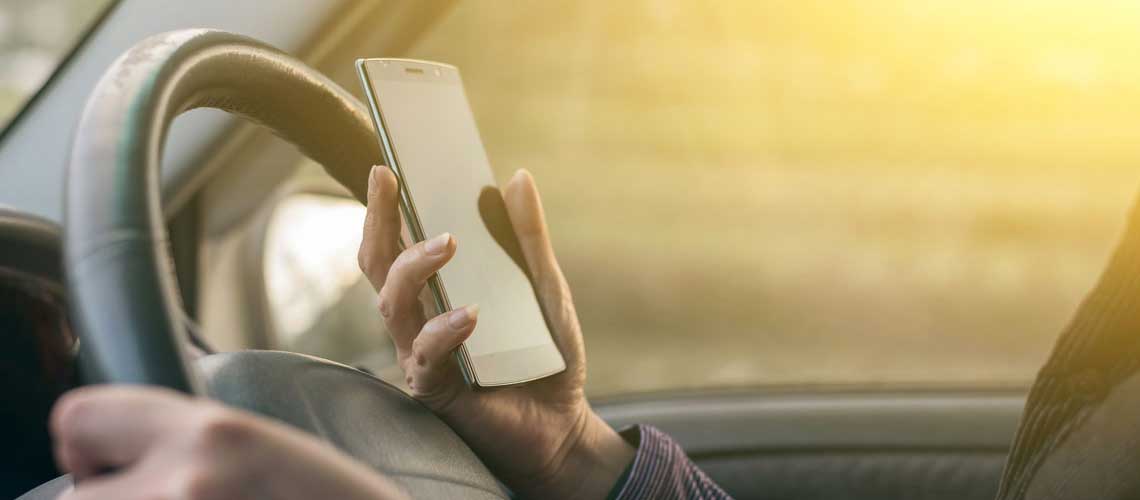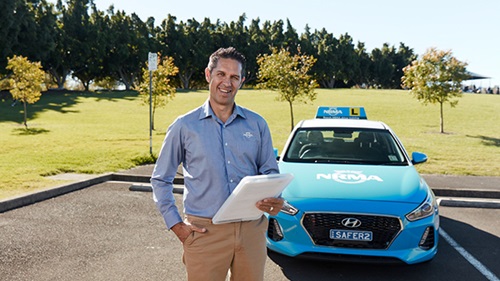Mobile phone use is emerging as one of the single greatest dangers to road users … whether they’re behind the wheel or on foot.
It is for this reason that Australian motoring clubs have focused on Pharrell Williams’s “don’t text and drive” message as part of the FIA's global #3500LIVES campaign, which enlists showbiz and sports stars to promote road safety.
The name of the campaign comes from the 3500 people who die on the world’s roads every day and the global finding that vehicle crashes are the number one cause of death in the 15-29 age group – also the group with highest rates of mobile phone use.
This month, look out for Pharrells’s face on billboards across major cities as a result but many may not understand why, so let’s consider the facts.
There are four main areas of driver distraction: visual (taking your eyes off the road); auditory (taking a phone call or chatting to a passenger); bio-mechanical (adjusting settings); cognitive (lost in thought, but also a factor in all of the above).
Mobile phone use, and particularly texting, can be a cause of all four forms of distraction – and the consequences can be severe.
University of Massachusetts researchers using a driving simulator have found that only 20 per cent of glances away from oncoming traffic take more than 1.6 seconds but that those which last for longer led to 80 per cent of the subsequent simulated crashes.
Put into a speed context: a two-second look away from the road ahead while travelling at 60km/h (37mph) means 33m is covered unsighted and 56m, which is longer than an Olympic swimming pool, is the distance travelled ‘blind’ at 100km/h (62mph).
US studies also found that fatal crash rates for novice drivers are nine to 10 times higher in terms of fatalities per distance travelled than for middle-aged drivers, and the results from Australian analysis are similarly grim.
Researchers in Queensland have found that general distraction is a contributor to 22 per cent of car crashes and 71 per cent of truck crashes, while experts in Victoria claim that speaking on a mobile phone quadruples crash risk – and texting increases it by a factor of 20.
But texting is only the tip of the iceberg when considering the potential for mayhem and tragedy caused by mobile phone use around vehicles.
Pokemon Go was one of the hottest fads of 2016 but it was also one of the most dangerous for road users: a San Diego University study over a 10-day period last July calculated that 113,993 incidents involving drivers and/or pedestrians were caused by game-related distraction.
There were also 14 car crashes uniquely attributable to Pokemon Go at this time, including a man in the US who drove into a tree and a Canadian motorist who reversed into a police vehicle, while a pedestrian in Japan was killed the following month by a car driven by a man playing the game.
There have been no reports of deaths directly attributable to Pokemon Go in Australia but an NRMA Motoring Education survey revealed shocking use trends amongst schoolchildren.
There was a high level of deception amongst the pre-teens surveyed, with 31 per cent admitting they played in secret from their parents and 17 per cent broke rules about playing near roads.
Surprisingly, 36 per cent of parents failed to forbid hunting Pokémon near roads and 68 per cent of children reported feeling safe doing so despite the dangers.
If the Pokémon Go fad has faded, it is merely the first of what is expected to be a new generation of augmented reality (AR) applications that loom as a road safety challenge.
And when we consider the damage done by texting – which simply didn’t exist as an option for most people 20 years ago – it is clear that the threat is growing.
It is for this reason that Australian motoring clubs have focused on Pharrell Williams’s “don’t text and drive” message as part of the FIA's global #3500LIVES campaign, which enlists showbiz and sports stars to promote road safety.
The name of the campaign comes from the 3500 people who die on the world’s roads every day and the global finding that vehicle crashes are the number one cause of death in the 15-29 age group – also the group with highest rates of mobile phone use.
This month, look out for Pharrells’s face on billboards across major cities as a result but many may not understand why, so let’s consider the facts.
There are four main areas of driver distraction: visual (taking your eyes off the road); auditory (taking a phone call or chatting to a passenger); bio-mechanical (adjusting settings); cognitive (lost in thought, but also a factor in all of the above).
Mobile phone use, and particularly texting, can be a cause of all four forms of distraction – and the consequences can be severe.
University of Massachusetts researchers using a driving simulator have found that only 20 per cent of glances away from oncoming traffic take more than 1.6 seconds but that those which last for longer led to 80 per cent of the subsequent simulated crashes.
Put into a speed context: a two-second look away from the road ahead while travelling at 60km/h (37mph) means 33m is covered unsighted and 56m, which is longer than an Olympic swimming pool, is the distance travelled ‘blind’ at 100km/h (62mph).
US studies also found that fatal crash rates for novice drivers are nine to 10 times higher in terms of fatalities per distance travelled than for middle-aged drivers, and the results from Australian analysis are similarly grim.
Researchers in Queensland have found that general distraction is a contributor to 22 per cent of car crashes and 71 per cent of truck crashes, while experts in Victoria claim that speaking on a mobile phone quadruples crash risk – and texting increases it by a factor of 20.
But texting is only the tip of the iceberg when considering the potential for mayhem and tragedy caused by mobile phone use around vehicles.
Pokemon Go was one of the hottest fads of 2016 but it was also one of the most dangerous for road users: a San Diego University study over a 10-day period last July calculated that 113,993 incidents involving drivers and/or pedestrians were caused by game-related distraction.
There were also 14 car crashes uniquely attributable to Pokemon Go at this time, including a man in the US who drove into a tree and a Canadian motorist who reversed into a police vehicle, while a pedestrian in Japan was killed the following month by a car driven by a man playing the game.
There have been no reports of deaths directly attributable to Pokemon Go in Australia but an NRMA Motoring Education survey revealed shocking use trends amongst schoolchildren.
There was a high level of deception amongst the pre-teens surveyed, with 31 per cent admitting they played in secret from their parents and 17 per cent broke rules about playing near roads.
Surprisingly, 36 per cent of parents failed to forbid hunting Pokémon near roads and 68 per cent of children reported feeling safe doing so despite the dangers.
If the Pokémon Go fad has faded, it is merely the first of what is expected to be a new generation of augmented reality (AR) applications that loom as a road safety challenge.
And when we consider the damage done by texting – which simply didn’t exist as an option for most people 20 years ago – it is clear that the threat is growing.





